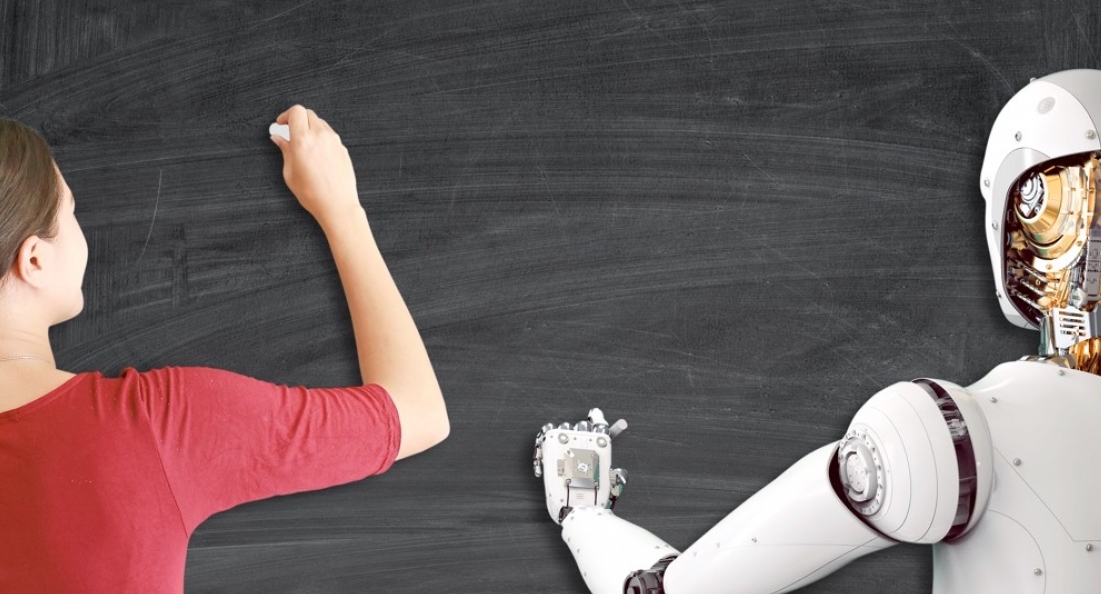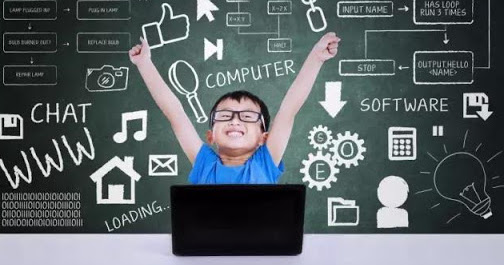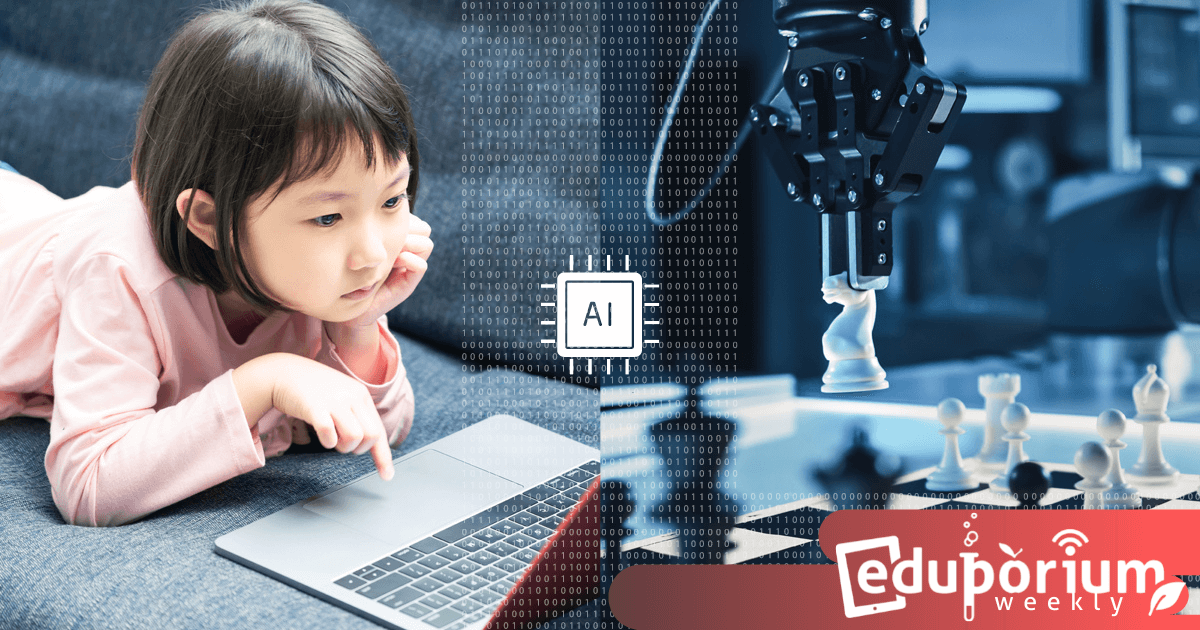Artificial intelligence is a technology that’s already substantially impacted our lives—whether we fully realize it or not. It’s impacted the world of education as well and, as instruction has shifted online, it continues to do so. While relying on artificial intelligence is not something many teachers were expecting—or even would like to do—it’s something that can, in fact, help them. It can help fill certain voids—whether those voids stem from a lack of time, physical distance, or something else. Educators are now relying on technology to teach more than they ever have and, before we dismiss how AI can play a role, it might be worth knowing more about just what that role is and how it can help teachers and students as they navigate distance learning.
Filling Education Gaps with AI
While we expected there to be some struggles with a massive shift to distance learning, it’s now been a while and we know a lot more about the specific challenges teachers and school leaders are dealing with. One of the most talked about of those challenges—and parents can certainly attest to this as well—is the simultaneous realization that access to resources, like the Internet, simply is not a reality for every student. To that end, teachers and learning platforms are also stretched pretty thin with workload and usage increasing a great deal. Digital technologies are essentially the only option for ensuring that learning—in some form—continues. And, artificial intelligence tools are starting to enter the discussion.
Artificial intelligence in today's learning environments.
We’ve known that AI can enhance education for a while but many educators have shied away from further exploration. Since we’re pretty much in the most desperate situation we’ve encountered at the moment (sorry to be so negative), we’re trying to find something—anything—that can help. There certainly are benefits to artificial intelligence technology and, since many educators are in a pinch, it can be valuable. Teachers simply do not have the time anymore to personalize learning for their students, which is something that a lot of their students need in order to get the most out of it. That’s one way that AI tools can help, allowing teachers to identify specific attention students need and deliver it.
AI and personalized learning.
To start, artificial intelligence can provide students with more personalized learning experiences—even as they learn remotely. It can help identify their greatest needs, allow teachers to highlight their strengths, and fill gaps due to physical distance. To get the most out of AI if trying it, teachers tend to analyze the data it yields and use that to provide students with legitimate feedback they can then use themselves. Aside from that, AI tools can provide detailed metrics for how students are progressing. In some cases, they can also alert them to any potential drop-offs in academic performance since leaving the classroom. While we expect these kinds of drop-offs and know not to punish students, teachers can (and should) still correct them and artificial intelligence can help with that.
The Effects of AI on Remote Learning
AI is continuing to grow and has already made its presence felt at all levels of the education model. With remote instruction now the driving force behind teaching today’s youth, however, it’s fair to wonder how artificial intelligence can improve the situation or if it can even make an impact. Of course, education has completely transformed thanks to required isolation and instruction (ideally) has shifted online. Besides equity issues, basic remote learning is comparable to throwing things towards the wall and seeing what sticks. It’s inefficient but we know that teachers in this position are doing their best with the resources they have. We’re starting to wonder, however, if AI might be able to help some of them.
Trying to manage a remote classroom.
Remote teaching and learning isn’t as effective as traditional, in-school, face-to-face instruction. Okay, we probably all already know that, but it’s important to understand why this is the case. It’s very tough for educators to fully motivate students over a screen and almost as difficult for them to keep themselves motivated with all that is going on. Without this motivation and in-person connection, student engagement and motivation are among the first and most important elements lost in distance learning. The thing is, however, that teachers still have to teach and many still have to evaluate student progress, too. There’s been talk, for example, about using an AI tool to assess student work to save teachers time. It could essentially read their responses, let them know if they’re correct, and even provide feedback. Though likely tough to implement, it could be very valuable if called upon.
Students using artificial intelligence in remote learning.
AI could be a potentially useful tool for students as well. If implemented, it can learn about students and help teachers develop customized learning profiles aligned with their own unique styles of learning. In this theory, an AI tool would learn about students’ strengths and preferences by analyzing past assignments and assessments. Then, it would use the information to recommend content students should focus on for a more targeted way of learning. With a more targeted plan, AI can help maximize distance learning, though not many teachers will likely use it. Although it can help enhance instruction, the learning curve can be steep as teachers already lack free time. So, for now, AI will probably remain on the outside of distance learning though it has the potential to help.

AI’s Potential in Distance Learning
Many people, including technology experts, expect that artificial intelligence will play a huge role in our lives eventually. While it’s all but certain that an artificially intelligent being could never replicate the human interaction element and, for that reason alone, likely never replace teachers, AI may very well redefine education, create new jobs, and alter or eliminate existing jobs. When teaching and learning from home, specifically, AI can fill some of the gaps that teachers simply cannot address. In filling these gaps, AI tools can help replace some of the personalization that students are missing outside the classroom. It can also help educators create more flexible learning environments that benefit all students.
Specific benefits AI provides to teachers.
The overall goal of this remote learning endeavor for teachers is to continue to deliver quality instruction—or at least the highest quality of instruction possible. Of course, any attempt teachers make to leverage AI in this situation amounts to nothing more than an experiment. At least they'd have a better idea of how the technology works, however, and if it's worth exploring going forward. Some online learning management systems and other educational programs use simpler forms of AI to help recommend lessons and activities for students based on their progress and where they need to improve. To that end, artificial intelligence doesn’t have to be too over the top. In fact, it’s very much possible that the simpler forms of AI provide teachers with the most valuable information.
Artificial intelligence and improving efficiency.
When using AI in education, it can help both teachers and students with separate parts of the process. For students, one of the biggest benefits it provides is that personalization. AI tools can help teachers recognize how to adapt to the pace at which certain students learn, create personal learning goals for individual students, and understand how to put the feedback it provides into action. As for teachers, they have their hands full with their normal day-to-day responsibilities, shifting them all online, and trying to be there for students as much as possible. Finding the right AI tools can help teachers deliver assessments, monitor student health (like movements or jitters), and gain insights into how they’re doing overall. But, again, it comes down to commitment and we know that’s a long shot at best.
Making the Best Use of Artificial Intelligence in Education
The potential uses of artificial intelligence are extremely immense and, in education alone, it presents a bunch of interesting possibilities. As we’ve said, it seems students would benefit most from personalized instruction enabled by data that the technology can collect. In this case, teachers could work with the data they receive to augment the instruction they give to their students. It’s important to note that educators would use the AI to help students rather than the AI completely taking over. We may not know much about how exactly artificial intelligence will play into education, but it does seem pretty clear that the best (and possibly only) option is for teachers to use it to enhance their offerings—certainly not to replace them.
Educational tools are already intelligent.
Whether teachers and administrators realize it or not, they’re probably already using artificial intelligence in one way or another. It could be that they’re using it in their preparation or even in their daily instruction without always realizing it. That’s because artificial capabilities are built into some software tools and learning platforms they use on a daily basis. Using AI in education does not necessarily mean that teachers are relying on 100 percent AI-based programs. More than likely, they’re exposed to smaller samples of artificial intelligence when accessing learning analytic platforms, online courses, and more. Personal connections aside, however, the presence of AI in education could probably never replace teachers for many reasons. It may have flaws and biases, show that it’s typically more for commercial purposes, or force teachers to learn it.
How artificial intelligence helps students.
Since it’s pretty much a consensus that AI won’t replace the true quality of a teacher, more of a focus is now being placed on how it can be used to enhance their efforts. One suggestion is an approach referred to as high-tech and high-touch in which the AI tools can create new learning opportunities for students while, simultaneously, teachers are maintaining the valuable human relationships. All students can potentially benefit from AI and school leaders can use it to reshape their existing practices. In a perfect world, AI will be a tool that supports teachers, expands their capabilities, and spurs greater student achievement. As we’ve said, we'll still have to find out how accurate this is.

The Connection Between AI and Education
In a new article from Getting Smart, their staff detailed some of the connections that have been created between a rise in artificial intelligence exploration and the current state of the world. While half of the economy has essentially come to a stop, there's a huge part of it that's still moving forward thanks to cloud-computing jobs. A large portion of these jobs have to do with artificial intelligence and machine learning. This has led some people to use their free time to learn more about this technology and, perhaps, start building some skills for filling one of the millions of AI-related jobs that will likely be available over the next few years.
How we learn about AI.
To boost knowledge on the ins and outs of AI, those studying it need so much information very quickly. Those interested in these careers must consistently produce quality work and, the earlier they learn how, the better. Particularly of interest to us, as the artificial intelligence industry continues to grow, its impact is extending to the education world—particularly in high school, community colleges, and universities. It’s contributed to making computer science courses even more valuable and something else has changed as well. With this shift, students are more likely to identify careers that will be popular when they’re ready to enter the workforce rather than first earning a degree and then finding a job. As you might expect, computer science is near the top of this list, helping guide students in their decision making.
Making a career in this new field.
Employees can also enter this line of work without necessarily obtaining a degree. Employers are often more interested in the skills a candidate has rather than the education they’ve obtained. Certificate programs are an increasingly popular option as more focus is being placed on verified skills and quality of work. For high school educators, this means they can support students by offering blended learning instruction as well as competency-based options so that they help ensure students are sufficient in the most important areas before continuing on. Apprenticeships in AI are also very valuable and, when they can count towards coursework, well, then that’s even better. Whatever way you spin it, AI can be a helpful tool in education, but it will still requires skilled workers to develop, maintain, and improve it. And, those workers may now be in high school or even younger.
For the latest EdTech, STEM, and 21st century education news, follow us on Twitter and Instagram. Like us on Facebook, too, or sign up for our newsletter for our latest product announcements and offerings. If you have an idea for an Eduporium Weekly theme, send us a message on social media or comment below.



